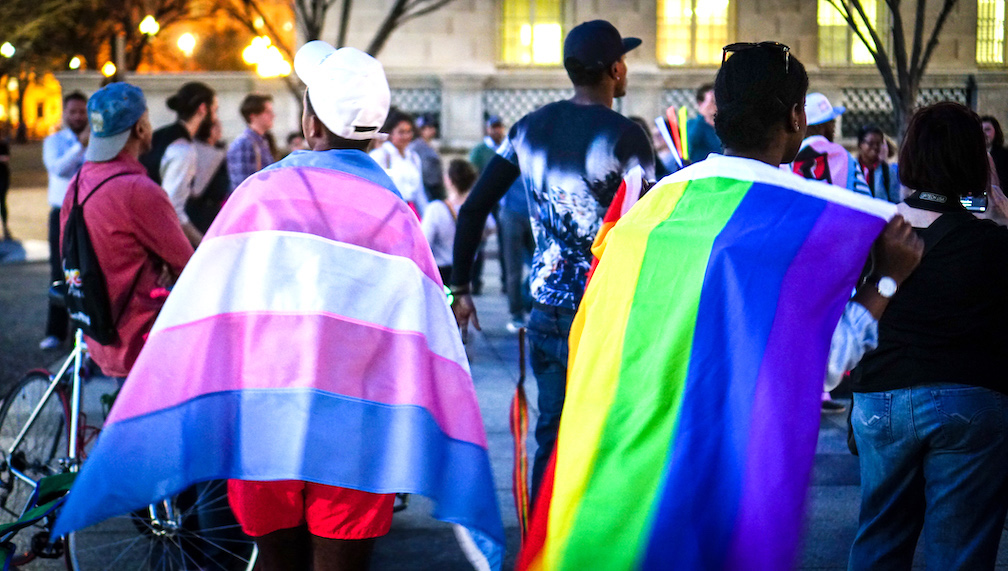
Shaping Health Equity: The Impact of State-Level Policies on LGBTQ Health Outcomes Over Two Decades
State-level laws significantly influence LGBTQ health outcomes, as revealed by a comprehensive 20-year longitudinal study across the United States. Published in the American Journal of Epidemiology, new research highlights the critical role of policy environments in shaping health equity for marginalized communities.
Introduction
Structural cisheterosexism—the systemic privileging of cisgender heterosexual individuals while marginalizing LGBTQ populations—manifests through discriminatory laws, cultural norms, and institutional practices. These structures contribute to significant health disparities for LGBTQ individuals, including reduced access to care, higher rates of mental health challenges, and poorer overall health outcomes.
A groundbreaking study published in the American Journal of Epidemiology examines the intersection of state policy environments and health outcomes for LGBTQ populations in the U.S. from 1996 to 2016. By categorizing states into distinct policy trajectories and analyzing their impact on health measures, the study provides critical insights into how laws shape the well-being of marginalized communities.
Study Overview
The study utilized data from the Sexual and Gender Minority (SGM) State Law Database to analyze state-level laws impacting LGBTQ populations. Researchers linked these data with health outcome metrics from the 2017 Behavioral Risk Factor Surveillance System (BRFSS), focusing on:
- Self-rated health
- Frequent mental distress
- Health insurance coverage
- Access to a personal doctor
The study spanned 50 U.S. states and Washington, D.C., over two decades, offering a comprehensive view of the evolving policy landscape and its implications for public health.
Methods
The researchers employed advanced sequence and cluster analysis techniques to map the policy trajectories of states over the 20-year period. Key methodological steps included:
- Policy Categorization: State laws were grouped into five policy conditions, ranging from predominantly protective to consistently discriminatory.
- Sequence Analysis: This method assessed transitions between policy states, focusing on the timing and duration of inclusive or discriminatory laws.
- Cluster Analysis: States with similar policy trajectories were grouped into clusters for easier comparative analysis.
- Multilevel Logistic Regression: This statistical method evaluated the associations between state policy clusters and health outcomes, adjusting for demographics like age, income, and LGBTQ identity.
The researchers defined 38 unique policy trajectories, grouped into five primary clusters, to capture the complexity of state-level legislative environments.
Findings
The study’s findings reveal a profound connection between state policy environments and health outcomes for LGBTQ populations:
Policy Trajectories and Clusters
- Cluster 1: Consistently Predominantly Discriminatory States: These states maintained a high prevalence of cisheterosexist laws throughout the study period. LGBTQ individuals in these states reported the worst health outcomes, including higher rates of poor self-rated health and frequent mental distress.
- Cluster 2: Fairly Discriminatory States Moving Toward Inclusivity: States in this cluster transitioned from discriminatory to moderately protective laws. Improvements in health outcomes, such as increased insurance coverage and access to care, were observed in LGBTQ populations.
- Cluster 3: Consistently Protective States: These states demonstrated the most inclusive policies over the study period. LGBTQ individuals in these states reported the highest quality of health and the lowest disparities in healthcare access.
Health Disparities
The analysis highlighted stark disparities in health outcomes:
- LGBTQ individuals in predominantly discriminatory states were 50% more likely to report poor health compared to their cisgender heterosexual counterparts.
- In protective states, the disparity in frequent mental distress was significantly reduced, with LGBTQ individuals reporting distress rates only slightly higher than cisgender heterosexual individuals.
- Access to healthcare improved substantially in protective states, with fewer LGBTQ individuals reporting cost-related barriers to care.
Public Health Implications
The findings underscore the critical role of state policy environments in shaping health outcomes for LGBTQ populations. Key public health takeaways include:
1. Legislative Advocacy
Enacting and maintaining LGBTQ-inclusive laws can significantly improve health outcomes and reduce disparities. Policymakers must prioritize anti-discrimination laws, marriage equality, and protections against conversion therapy. Additionally, standing alongside and supporting LGBTQIA+ groups is essential, especially as more radical groups taking control of larger government bodies increase risks to anyone who is “out”, and thus limits potential openness.
2. Targeted Interventions
Public health programs should focus on mitigating the impacts of discriminatory environments through targeted interventions, including mental health support and outreach in high-risk states.While these need to be geared towards these populations, they likely also should not be exclusive or have the ability to “out” potential beneficiaries of these interventions; Otherwise, resource utilization may be limited, especially in areas where programs are most needed.
3. Enhanced Data Collection
Improved collection of sexual orientation and gender identity data is essential for monitoring health disparities and informing evidence-based interventions. It should be noted that without the first two points, this is essentially impossible and non-nonsensical to pursue. We cannot expect to receive accurate data about populations who are at risk by nature of being exposed, especially if we ourselves are not willing to face and combat discrimination, misinformation, and hate head on.
Conclusion
The study highlights the long-term effects of structural cisheterosexism on LGBTQ health, demonstrating that inclusive policies are essential for improving health equity. While progress has been made, disparities persist in states with discriminatory laws, emphasizing the need for sustained advocacy and public health interventions.
By addressing the structural determinants of health, including policy environments, public health systems can better support marginalized populations and reduce inequities on a national scale.
The image for this article was collected via Boston Spirit Magazine, used under a Creative Commons 4.0 License and taken by Ted Eytan.

Great work and many thanks!
Nobody benefits from making other people’s health worse. Even bigoted red-state legislators should realize that discrimination makes everybody’s health care more expensive. Our democracy unfortunately elevates the wrong minority rather than protecting the minorities under pressure and attack.